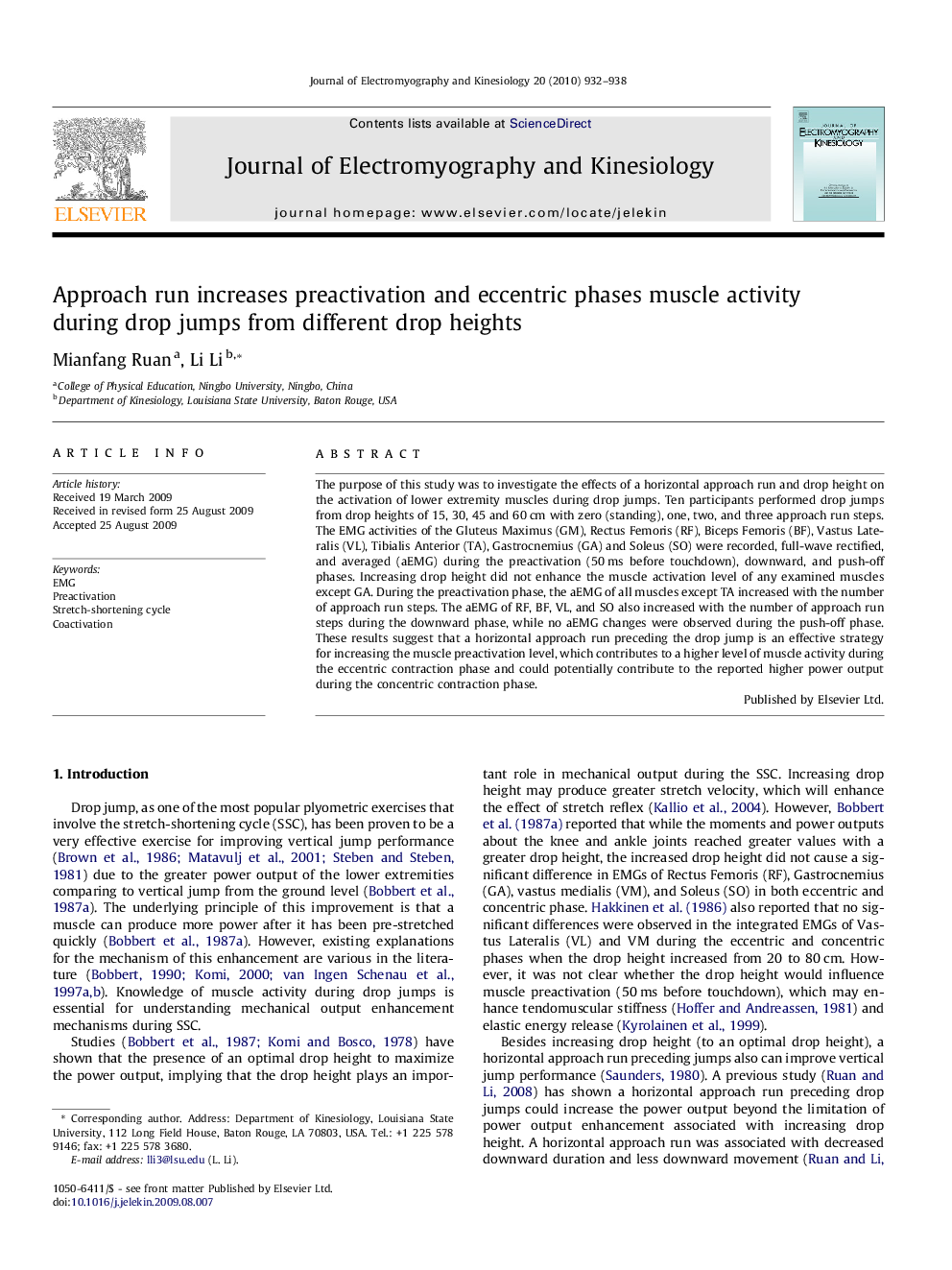| Article ID | Journal | Published Year | Pages | File Type |
|---|---|---|---|---|
| 4065136 | Journal of Electromyography and Kinesiology | 2010 | 7 Pages |
The purpose of this study was to investigate the effects of a horizontal approach run and drop height on the activation of lower extremity muscles during drop jumps. Ten participants performed drop jumps from drop heights of 15, 30, 45 and 60 cm with zero (standing), one, two, and three approach run steps. The EMG activities of the Gluteus Maximus (GM), Rectus Femoris (RF), Biceps Femoris (BF), Vastus Lateralis (VL), Tibialis Anterior (TA), Gastrocnemius (GA) and Soleus (SO) were recorded, full-wave rectified, and averaged (aEMG) during the preactivation (50 ms before touchdown), downward, and push-off phases. Increasing drop height did not enhance the muscle activation level of any examined muscles except GA. During the preactivation phase, the aEMG of all muscles except TA increased with the number of approach run steps. The aEMG of RF, BF, VL, and SO also increased with the number of approach run steps during the downward phase, while no aEMG changes were observed during the push-off phase. These results suggest that a horizontal approach run preceding the drop jump is an effective strategy for increasing the muscle preactivation level, which contributes to a higher level of muscle activity during the eccentric contraction phase and could potentially contribute to the reported higher power output during the concentric contraction phase.
